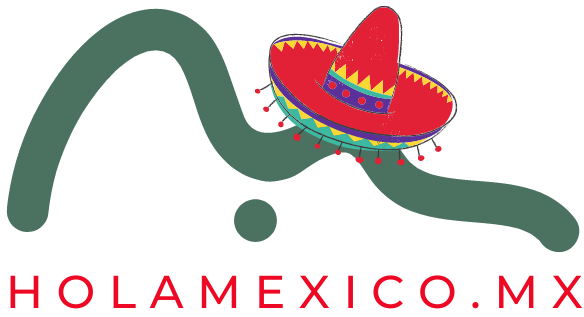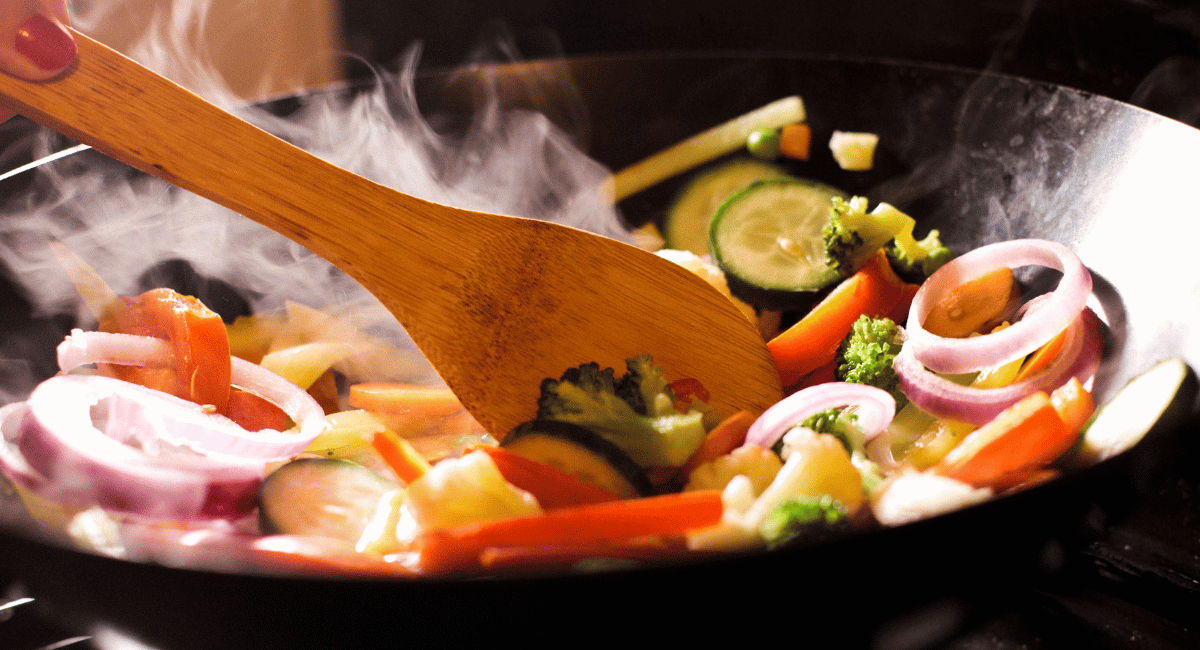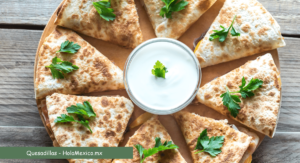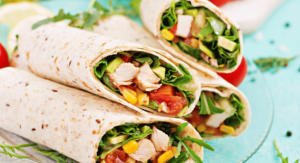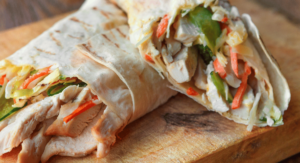Frying in Mexican cuisine involves cooking food in oil or fat at relatively high temperatures. It can be shallow frying (sautéing) or deep frying, both widely used methods. The technique aims to achieve a crispy exterior while retaining moisture inside the food.
Frying in Mexican recipes stands out due to the use of specific oils (like corn or lard) and traditional techniques. It often involves the use of a comal (a flat griddle) or a deep pot called a cazuela for frying, distinguishing it from methods like grilling or baking.
Culinary Importance of Frying
Frying holds a crucial place in Mexican cuisine as it contributes significantly to the development of flavors and textures. It allows for the creation of dishes with crispy exteriors, imparting unique flavors while maintaining the essence of the ingredients. Frying adds depth to the taste profile of traditional Mexican dishes by creating crispy textures that complement the flavors of the ingredients.
Types of Ingredients Used in Frying (Frituras):
Commonly fried ingredients in Mexican cooking include tortillas (to make chips or taco shells), chiles (like in chiles rellenos), various meats (such as carnitas or chicharrón), and vegetables (like plantains or avocados). Mexican cuisine has unique ingredients frequently fried, such as masa (corn dough) used for making crispy items like tamales, gorditas, or flautas. Additionally, ingredients like cactus (nopales), squash blossoms (flor de calabaza), or specific regional fruits are also fried in various preparations. Frying in Mexican cuisine showcases the richness of flavors and textures that contribute to the diverse and vibrant tapestry of traditional Mexican dishes.
Preparation and Handling of Ingredients
Before commencing the frying process in Mexican recipes, crucial preparation steps involve ensuring ingredients are adequately dried, especially when frying meats or vegetables, to avoid excessive splattering. Additionally, cutting ingredients uniformly helps achieve even cooking. Coating ingredients with batter or masa (corn dough) is also common for certain fried dishes in Mexican cuisine.
To achieve the best results when frying in Mexican cuisine, ingredients should be at room temperature and patted dry to minimize oil splatter. Proper handling involves avoiding overcrowding the frying pan or pot, which ensures that the temperature remains consistent and allows for even frying. Ingredients should be added carefully to hot oil to prevent splashing.
Temperature Control and Oil Selection
Maintaining the right temperature when frying Mexican dishes is significant to achieve optimal texture and prevent oil absorption. It ensures a crispy exterior while keeping the interior moist. For deep frying, maintaining a temperature between 350°F to 375°F (175°C to 190°C) is generally recommended in Mexican cooking.
In traditional Mexican recipes, preferred oils or fats used for frying vary regionally. Common choices include corn oil, lard (rendered pork fat), vegetable oil, and occasionally avocado oil. Lard is particularly valued for its ability to impart distinct flavors to fried dishes.
Flavor Enhancement and Seasoning during Frying
To infuse flavors into dishes while frying in Mexican cooking, ingredients like spices, herbs, or aromatics are often added directly to the hot oil. This technique allows the oil to become infused with flavors, subsequently imparting them to the food being fried. Additionally, some ingredients might be marinated or seasoned before frying to enhance their taste.
Specific seasoning techniques during the frying process in Mexican cuisine involve using various spice blends, such as chili powders, cumin, paprika, and Mexican oregano. Some dishes utilize seasoned batters or coatings applied to ingredients before frying, contributing to the overall flavor profile.
Classic Mexican Dishes Incorporating Frying
Iconic Mexican recipes that prominently involve frying in their preparation include:
- Chiles Rellenos: Begin by roasting poblano chiles, stuffing them with cheese or meat, then dipping them in an egg batter before frying until golden. Serve with tomato-based sauce.
- Tostadas: These involve frying or toasting tortillas until crisp and then topping them with various ingredients like refried beans, meat, lettuce, cheese, and salsa.
- Tacos Dorados: Corn tortillas are filled with meat or beans, rolled, and then fried until crispy. They’re typically topped with lettuce, salsa, cheese, and sour cream.
Step-by-Step Instructions for Utilizing Frying in These Dishes
- Chiles Rellenos: Roast poblano chiles over an open flame, peel off the charred skin, make a slit to remove seeds, stuff with cheese or meat, coat in an egg batter, and fry until golden in hot oil.
- Tostadas: Fry corn tortillas in hot oil until crispy, drain excess oil, then add a layer of refried beans followed by desired toppings such as shredded meat, lettuce, cheese, salsa, and sour cream.
- Tacos Dorados: Fill corn tortillas with desired ingredients, tightly roll them, secure with toothpicks, and fry in hot oil until golden and crispy. Remove toothpicks before serving.
Regional Variations and Adaptability
Frying techniques across various Mexican regions differ in terms of preferred oils/fats used, ingredients, and specific dishes. For instance:
- In some coastal regions, seafood like fish or shrimp is commonly fried using local spices and seasonings, showcasing the influence of coastal flavors.
- Northern regions might favor using beef or pork for fried dishes, emphasizing meat-centric preparations.
- Central and Southern regions often utilize indigenous ingredients like masa, beans, and a variety of chiles, showcasing diversity in flavors and textures in their fried dishes.
Regional variations or unique styles of frying in different parts of Mexico showcase diverse ingredients and techniques. Ingredients specific to certain regions, coupled with distinct cooking methods, contribute to the rich tapestry of Mexican cuisine, exhibiting the country’s culinary diversity.
Common Frying Pitfalls to Avoid
Some typical errors when frying ingredients for Mexican dishes include:
- Overcrowding the Pan: Adding too many ingredients at once reduces the oil’s temperature, leading to soggy and unevenly cooked food.
- Incorrect Oil Temperature: Frying at too low a temperature results in oily, soggy food, while frying at too high a temperature can burn the exterior before the interior is fully cooked.
- Moisture in Ingredients: Wet or damp ingredients cause oil to splatter excessively and can make the food soggy instead of crispy.
Rectifying and Preventing Mistakes
To rectify these mistakes and achieve better frying results:
- Avoid Overcrowding: Fry in batches to ensure consistent cooking and maintain the oil temperature.
- Maintain Proper Oil Temperature: Use a thermometer to monitor oil temperature and adjust the heat as needed to keep it within the recommended range for frying.
- Dry Ingredients Thoroughly: Pat dry ingredients to remove excess moisture before frying to minimize oil splatter and ensure crispiness.
Troubleshooting Frying Issues
If the frying oil becomes too hot or smoky:
- Reduce Heat: Immediately remove the pan from heat or lower the stove setting to cool the oil. Adding a small amount of fresh oil can help reduce the temperature.
If the ingredients are overly greasy after frying:
- Drain Excess Oil: Place the fried items on paper towels to absorb excess oil. Blotting gently can help remove additional grease without compromising texture.
- Use Absorbent Ingredients: Incorporate absorbent materials like bread or fresh vegetables (such as lettuce) to soak up excess oil on the surface of the dish before serving.
Addressing these issues promptly while following proper frying techniques can salvage the dish and improve its overall quality, ensuring a better culinary experience when preparing Mexican fried dishes.
When it comes to frying in Mexican cuisine or any culinary practice, having the right equipment is essential for achieving optimal results. Here’s a detailed guide on the necessary equipment, suitable materials, sizes, and types for frying, along with some to avoid:
Essential Equipment for Frying
Frying Pan or Pot:
- Material: Stainless steel, cast iron, or heavy-gauge aluminum are excellent choices for durability and even heat distribution.
- Size: A wider surface area with sufficient depth is preferable for frying, allowing adequate space for ingredients without overcrowding. Sizes around 10-12 inches (25-30 cm) in diameter work well for home cooking.
Deep Fryer (Optional):
- Material: Stainless steel is the most common material, offering durability and heat retention.
- Size: Choose a capacity suitable for your cooking needs, typically around 4-6 quarts (4-6 liters) for home use. Adjustable temperature settings and a built-in thermometer can be really beneficial.
Thermometer:
- Material: Metal or digital thermometers designed for high temperatures (up to 400°F/200°C) to monitor oil temperature accurately.
- Type: A candy/oil thermometer or an instant-read digital thermometer is useful to help maintain the ideal frying temperature.
Slotted Spoon or Spider Strainer:
- Material: Stainless steel or heat-resistant nylon.
- Size: Medium to large sizes for easy and safe removal of fried items from hot oil.
Suitable Types and Materials:
- Stainless Steel: Durable, easy to clean, and resistant to corrosion. Suitable for frying pans, pots, and utensils.
- Cast Iron: Retains heat well and provides even cooking. Great for frying pans, especially for dishes requiring higher heat.
- Aluminum: Conducts heat efficiently but may react with acidic ingredients. Anodized aluminum or heavy-gauge aluminum with non-reactive coatings can be suitable.
- Carbon Steel: Ideal for woks or pans due to its heat conductivity and lightweight nature.
Types to Avoid:
- Nonstick Cookware for High-Temperature Frying: Nonstick coatings can deteriorate at high temperatures, releasing potentially harmful fumes. It’s best to avoid using nonstick pans or pots for frying at very high temperatures.
- Thin or Lightweight Cookware: Thin materials can lead to uneven heating and may not withstand higher frying temperatures, resulting in unsatisfactory cooking results.
Selecting the right equipment made of suitable materials and sizes ensures efficient frying, even heat distribution, and helps maintain the integrity of ingredients while achieving crispy and delicious outcomes in Mexican cooking or any frying process.
Conclusion
In summary, mastering the art of frying in Mexican cuisine involves not only understanding the cooking techniques but also utilizing the appropriate equipment. From the essential frying pan or pot to additional tools like thermometers and slotted spoons, having the right gear is pivotal in achieving crispy, flavorful dishes while preserving the authenticity of traditional Mexican flavors.
Selecting materials such as stainless steel, cast iron, or heavy-gauge aluminum ensures durability and even heat distribution, crucial for successful frying. While these materials excel in their ability to handle high temperatures and offer resilience, it’s equally important to avoid nonstick cookware for high-temperature frying and thin, lightweight materials that may result in uneven cooking.
Whether it’s the iconic chiles rellenos, tostadas, or tacos dorados, the choice of equipment greatly influences the outcome of these beloved Mexican recipes. The careful consideration of suitable materials, sizes, and types of equipment ensures that each frying endeavor brings forth the authentic and vibrant flavors of Mexican cuisine, providing culinary enthusiasts with delightful and crispy creations to savor.”

